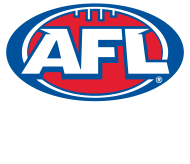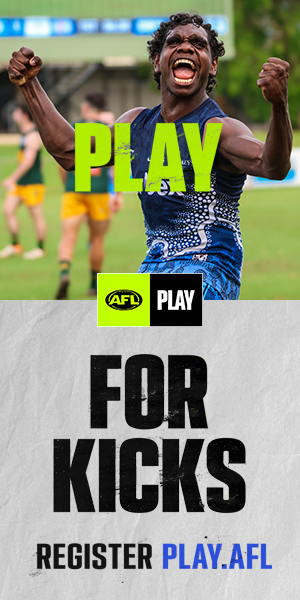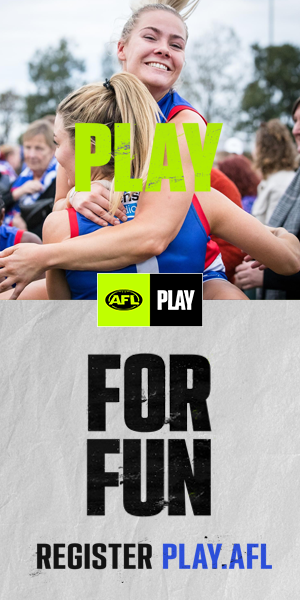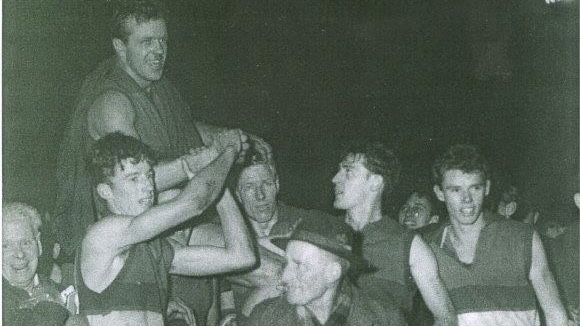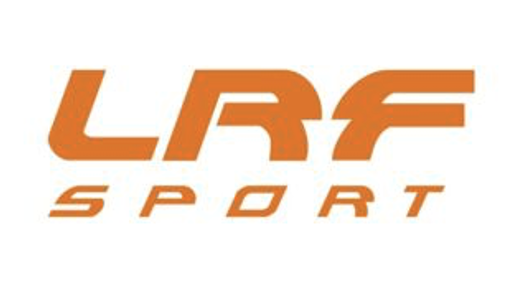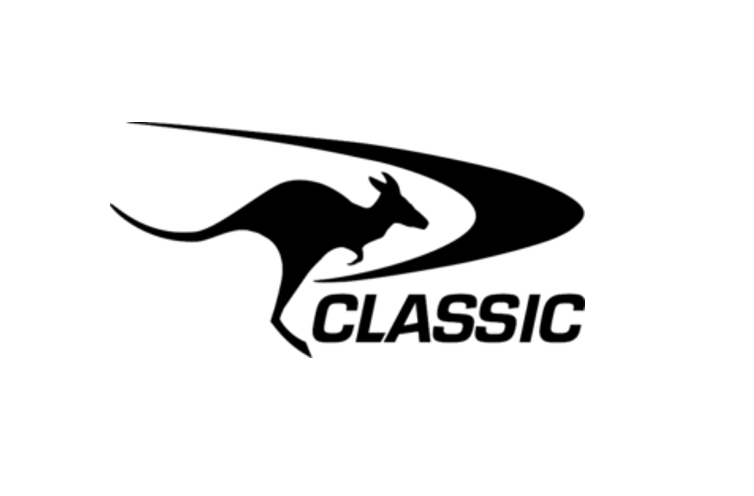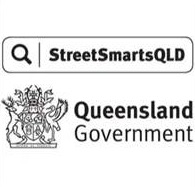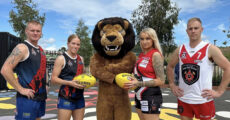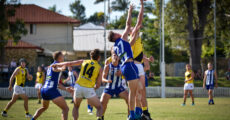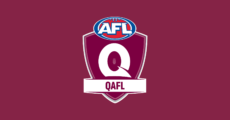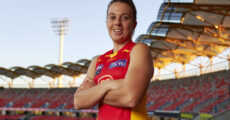Submitted by Peter Blucher.
For fifty-seven years Alan Hunter has been an anonymous pioneer in Queensland’s AFL history. A name and some bare-boned statistics. He played 15 games with Footscray from 1964-67 for four wins and eight goals. There was little else.
Not anymore. His back story has been uncovered as Footscray, now the Western Bulldogs, prepare for Saturday’s AFL grand final in Perth against Melbourne and a chance to win the club’s third premiership
The saviour was Darren Arthur, the Dogs historian since the early 1990s, a life member since 2013 and now the voluntary heritage co-ordinator at the club who coincidentally was looking to play at Southport in the 1980s before heading instead to Balmain in Sydney.
He revealed the story of how Hunter, a product of the Western Districts club in Brisbane, found himself at what was then Footscray’s Western Oval headquarters, since renamed Whitten Oval in honour of his famous teammate Ted Whitten Snr.
Born 11 January 1944 and now living in Broken Hill at 77, Hunter travelled to Melbourne in 1961 with a Queensland Under-18 side to play a ‘friendly’ against a Footscray Under-19 team. They surprised the locals, almost pulling off a huge upset due in no small part to six goals from full forward Hunter.
Afterwards Footscray secretary Jack Collins invited him to travel to Melbourne and trial with the Bulldogs. He did so in January 1962 and after standing out of football for a year due to a ban on interstate transfers from Queensland and NSW he played in the Reserves in 1963.
The stats show he made his VFL debut in Round 8 1964 against Geelong at Western Oval.
But still there was more to learn of the heart-warming story of a long-devoted Dogs man who, after seeing live the club’s glorious grand final in 2016, will sadly have to watch the grand final by himself on television on Saturday due to Covid restrictions.
But how do we find the man himself? He played at Wests in the QAFL so maybe he’s a relative of 1980’s Wests player Craig Hunter, now living in Perth. Wrong. Not a relative. But Hunter did suggest if anyone would know his namesake it would be Kevin Kluver, an encyclopedia on all matters Wests and neighbouring Sherwood.
Remember Kluver? Or ‘Groover’ as he was known when he coached Mayne in the QAFL in 1979-80. He was the lucky local who tossed the coin to start the Gabba AFL grand final last year after Sherwood won a national Toyota ‘Good for Footy’ competition which earned them the right to pick the coin-tosser.
“Do I know Alan Hunter? My word I do. He was like a football God at Sherwood when we were growing up,” said Kluver, who celebrated his 75th birthday on Friday (17 September).
“He went to Graceville State School and lived in Allardyce Street Graceville. His house virtually backed onto that of Robert Shepherd and was just around the corner from Ray Smith.”
It was football real estate gold. The history books tell us Hunter was the fourth Queenslander to play in the then VFL behind Kedron’s Erwin Dornau (South Melbourne 1948-52), Wilston-Grange’s Ken Grimley (Fitzroy 1957) and Sandgate’s Tom Broadbent (Fitzroy 1957).
Smith and Shepherd were the sixth and seventh after Mayne’s Peter Ellis played at Fitzroy (1969-71). Smith played 104 games with Essendon and Melbourne (1971-76) – the first Queensland AFL centurion – and Shepherd 43 games at Fitzroy (1975-77).
Also living just up the road from the Hunter family home were two more products of the Sherwood/Wests nursery – Colin Kimmorley, who became the 9th Queensland AFL player when he played at Collingwood (1976), and a young Gary Shaw, who would be the 15th at Collingwood (1983) after a brilliant stint at Claremont in Perth.
Hunter’s father Wally was the first president at Sherwood in 1957 and Hunter was a member of Sherwood’s first premiership side in 1958. It was the Under 14s side of future Queensland Football Hall of Fame legend Dr Allen Mackenzie, was captained by fellow Hall of Famer David Dalgarno and included well-known Wests types Trevor Hellyer, John Lynch and Neil Sartor. Among others.
“He (Hunter) was a beautiful player,” said Kluver. “He could do everything and when he ran it was like he was gliding along. He had an older sister Diana who was a real glamor. She became a model and was a real fascination for the young blokes growing up.
“If I remember correctly he (Hunter) got hit by a car once or fell off his bike and hurt his knee,” he added, noting that the second president at Sherwood was ‘Roly’ Shepherd, father of Robert.
It was about there that Hunter, eventually located after the club found an old phone number on file, took up the story himself.
“I did get hit by a car …. How did anyone remember that?” he said. “It was a wet Monday night before a schools grand final on the Friday against Corinda. It sent me flying and I landed on my knees. I could hardly walk. But I was captain of the side. We hadn’t won a premiership in 30 years and I was desperate to play.
“My Dad put me through a fitness test. Early on my knees banged together and I buckled. He said ‘that’s it – you’re out’. But in the end he let me play as long as I played at full forward and didn’t go more than 20m from goal.”
And? Hunter kicked eight goals and Graceville won. But he was quick to deflect any great adulation. “My opponent knew I couldn’t run so he’d take off after the ball and whenever they turned it over he was caught out. We’d end up with it and guys popped it over his head to me in the goalsquare. It was eight soft ones.”
Hunter also had a good recollection of the game he played against Footscray and the conversation afterwards with the Footscray secretary which sparked his move south.
“At halftime we were in front and the locals were shocked. They thought we were just a bunch of hacks from Queensland. They were so desperate to avoid the embarrassment of losing that in the second half they put on a couple of blokes who were the right age but had been playing in the seniors,” he recalled.
“After the match over a lemonade Jack Collins asked me if I’d be interested in trialling at Footscray. I was only 17 and told him he’d have to ask my parents but everything worked out. I had to sit out a year because there was a ban on the VFL recruiting kids from the development states of Queensland and NSW but it all worked out well in the end.”
Hunter made his senior debut on the wing wearing jumper #36 for the Dogs in a week when captain-coach Whitten was unavailable due to representative duties with the Victorian side. Dogs Reserves coach Bill Findlay, the 1942-43 North Melbourne captain-coach, filled in for Whitten as he had done once in 1961 and ’62 and would do again in 1964. But still Hunter remembers fondly receiving his jumper from the great E.J.Whitten.
His first senior game was the fifth game of future Geelong 300-gamer Sam Newman and the 11th game of Bill Ryan, who later moved to the Gold Coast to play a big part in Queensland football through the 1970s.
A skilful but lightly built 185cm centreman, Hunter played 14 games over three years under Whitten in 1964-65-66 – 5-6-3 games – and one game in 1967 under 1954 Dogs premiership captain-coach Charlie Sutton when he made a coaching comeback in 1967-68.
He played 11 times in the same team as Whitten – ‘it was such an honour’ – and in his last game under Sutton, coach of the Bulldogs Team of the Century, counted four TOC members as teammates – John Jillard and George Bisset, who had also played in his first game, and Gary Dempsey and John Schulz.
But his fondest memory was playing in the 1964 night premiership, when Footscray beat St.Kilda under lights at South Melbourne’s Lake Oval in a series played each year from 1956-71 between the eight sides that did not make the premiership finals.
“St.Kilda had a very good side at the time and went on to play in the day grand final the next year (1965) and win their only premiership in 1966. It disappoints me that nobody seems to care about that these days. At the time we played in front of big crowds and it was big news, but now it doesn’t seem to be recorded anywhere,” he said.
And his favorite off-field memory? It involved the 1964 end-of-season players’ trip to Surfers Paradise. Hunter told the story in an article he wrote for the first of two volumes called ‘The Bulldog Heritage: Historical Player Register’, published by the Western Bulldogs Forever Foundation.
It read: “Barry Ion of ‘Bazz and Pilko’ (Adelaide radio 5AD) fame, ‘Wee George’ Bisset and myself, each a little inebriated, decided to hire a two-seater bike to see the sights. We seemed to be able to get two on the bike okay but as soon as the third one jumped on the bike got the wobbles and we ended up on our backs (about 20 times). We thought it was hilarious and so did the gallery of locals that followed us up the street. In the end we dumped the bike on the side of the road and saw the sights by foot.”
At 23 Hunter’s VFL career was over. He joined West Broken Hill as player-coach in a deal brokered by noted Melbourne reporter Graham ‘Bushy’ Bourke.
“To be honest, I’d gone about as far as I was going to go at Footscray. I was a very good B-Grader but not really A-Grade material. I was skilful enough and could run but I was very light. I lacked the physical strength that was needed back then,” he said honestly.
“I’ve got no doubt if I hadn’t left somebody would have tapped me on the shoulder and invited me to look somewhere else. Bushy Bourke told me he could help set up a coaching job in Broken Hill that paid well and came with a good job and accommodation.
“I knew nothing about it really but he’d ring every day after work and convinced me it was a good move. And as it turned out it was.”
Paid an annual fee of $1000, Hunter had two years as player-coach of the West Broken Hill Robins, who wear Essendon jumpers, and ‘a couple’ more as a player before giving it away. And 50 years on he’s still there after a massive contribution to the club as secretary, selector, skills coach and ultra-loyal fan.
Post-football Hunter did some professional running and had a couple of years as a professional punter. Despite his mounting years he’s still in excellent shape, has a sharp memory and turn of phrase, and is coming to grips with modern technology.
“I’m very healthy. I have a nutri-bullet twice a day with vegies, kale and seeds and I fast every Sunday. But I might have a few drinks on a Saturday,” he said with a cheeky laugh.
“I come from good genes and I’ll live to 100 for sure. I like the gym. I do weights every day – squats and calf raises – and I’ll keep doing them. It keeps my legs strong and helps keep me young.”
Hunter, too, is learning how to operate a mobile phone. “We’ve got a betting syndicate and I needed a mobile phone so that I could put the bets on when it was my turn. I’m still not exactly sure what I’m doing but I’m getting there.”
He even has an email address. And of course it includes ‘36’ – the number he wore in his first two years at Footscray and in 11 of his 15 games before switching to #17 in 1966 and #15 in 1967.
Father of three and grandfather of four – soon to be five – Hunter proudly tells how every member of his extended family is a Bulldogs fan. It’s their great passion, he said. And they all went to the MCG on grand final day 2016 to see the club break a 62-year premiership drought.
“My daughter (Kelly) went to training on the Friday and I told her go to the door of the club and ask for (1960 Brownlow Medallist and five-time club champion) John Schulz. A couple of minutes later the doorman came back and said ‘come on up’. She stood on the balcony to watch training and met the players afterwards. I was just a skinny kid who came down from Queensland but that’s the way Footscray are. They look after their own. She had a great day.”
A big Schulz fan, Hunter also keeps in contact these days with 160-game Dog Ian Bryant, a member of the 1961 grand final side who finished 9th in the 1966 Brownlow Medal. “He’s a great fella Rat but the numbers are dwindling … we don’t chat as much as we used to, or as much as we should.”
Sadly there will be no trip to the MCG for the grand final this year. And Hunter cannot even catch up with family members in Orange, about 900km south-east of Broken Hill, due to Covid restrictions.
“Really I’ve been pretty lucky through what’s going on but I’m starting to realise it effects you a little more than you think. It’s the isolation that’s tough. You don’t see people. I used to walk down to the supermarket three times a week for my groceries but not any more.
“The family will all get dressed up in club colors – even the dog (a great dane) will have his jumper and beanie on. We’ll talk during the game but unfortunately that’s the best we can do,” he said.
Player #524 on an all-time Dogs playing list of 1031, Hunter is the first of four Hunters listed alphabetically, ahead of Kingsley, Lachie and Mark. And despite playing only 11 games in #36 in his beloved #36 he ranks seventh all-time for games played in #36 for the Dogs.
Oddly, only 20 players have worn #36 for the Dogs in 97 years in the VFL/AFL and none since Jose Romero (1996-2001) and Brian Lake (2002-12).
Ironically, the player who sits fifth on this list is Ricky Spargo, who played the first three years and 31 of his six years and 64 games for the Dogs from 1966-71. He’s the grandfather of Charlie Spargo, who will play against the Dogs in the grand final this week.
Despite the scant use of #36 in red, white and blue Lake and Romero, who also wore #36 at other clubs, rank fifth and ninth in AFL games all-time in #36.
And at a time when weird statistical oddities take on a whole new life, who holds the all-time record for games played in #36? None other than Melbourne coach Simon Goodwin in his time at Adelaide.
If only for Dogs fans, players to wear #36 in chronological order have been:-
- Alf Sampson – 1 game in 1935
- Billy Stephens – 7 games in 1937-38
- Don Seymour – 2 games in 1939
- Don Bauer – 10 games in 1943
- Byron Guthrie – 3 games in 1956
- Barrie Kerr – 2 games in 1957
- Keith Beamish – 7 games in 1959
- Owen Madigan – 7 games in 1961-62
- Alan Hunter – 11 games in 1964-65
- Ricky Spargo – 31 games from 1966-68
- Charles Pagnoccolo – 35 games from 1970-72
- Carl Vesty – 2 games in 1973
- Brian O’Keefe – 3 games in 1980
- Chris Burton – 1 game in 1980
- Jim McAllester – 12 games in 1981
- Darren Brown – 1 game in 1982
- Matt Hannebery – 32 games from 1986-90
- Tyson Lane – 9 games in 1995
- Jose Romero – 105 games from 1996-2001
- Brian Lake – 197 games from 2002-12
Not even Hunter’s second jumper #17 will be involved in Saturday’s grand final following Josh Bruce’s injury, but Hunter will follow closely the efforts of Taylor Duryea in #15, which was the number he wore in his last game.
And who is his favorite player? “You can’t go past ‘Bont’ (Marcus Bontempelli) – he’s a great player and a great person. But I really I love them all. I’ve got to be honest – I thought they’d lose each of the first three finals (this year) and I was glad to be wrong. But I tell you what … they’ll win this week. For sure.”
Pictured: A group of Bulldogs players carrying Ted Whitten off the ground – Alan Hunter pictured on the right.
Peter Blucher is a Consultant with Vivid Sport.
